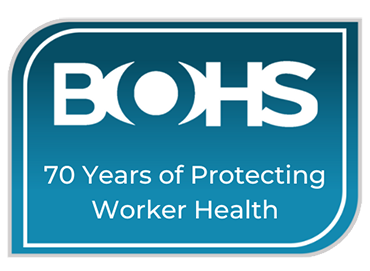In many jobs heat stress is an issue all year round (such as bakeries, compressed air tunnels, foundries and smelting operations) but, according to the HSE, the hot summer months may mean an increased risk of heat stress for some people.
Heat stress occurs when the body's means of controlling its internal temperature starts to fail. Factors including air temperature, work rate, humidity and clothing may all lead to heat stress.
The body reacts to heat by increasing the blood flow to take heat to the skin's surface, and by sweating. This results in cooling as sweat evaporates from the body's surface. Heat can also be lost by radiation and convection from the body's surface.
Typical example of a heat stress situation
In the workplace, someone wearing protective clothing and performing heavy work in hot and humid conditions could be at risk of heat stress because:
- Sweat evaporation is restricted by the type of clothing and the environmental humidity
- Due to the work rate, the body will produce heat and, if insufficient heat is lost, core body temperature will rise
- As core body temperature rises the body increases the amount of sweat produced, which may lead to dehydration
- The heart rate also increases which puts additional strain on the body
- If the body is gaining more heat than it can lose, the deep body temperature will continue to rise
- Eventually it reaches a point when the body's control mechanism itself starts to fail
- The symptoms will worsen the longer someone remains working in the same conditions.
What are the effects of heat stress?
Heat stress can affect individuals in different ways, and some people are more susceptible to it than others. Typical symptoms are:
- An inability to concentrate
- Muscle cramps
- Heat rash
- Severe thirst - a late symptom of heat stress
- Fainting
- Heat exhaustion - fatigue, giddiness, nausea, headache, moist skin
- Heat stroke - hot dry skin, confusion, convulsions and eventual loss of consciousness. This is the most severe disorder and can result in death if not detected at an early stage.
Where does heat stress occur?
Examples of workplaces where people might suffer from heat stress include:
- Glass and rubber manufacturing plants
- Mines
- Compressed air tunnels
- Conventional and nuclear power plants
- Foundries and smelting operations
- Brick-firing and ceramics plants
- Boiler rooms
- Bakeries and catering kitchens
- Laundries.
In these industries, working in the heat may be the norm. For others it will depend on the type of work being done and factors such as seasonal changes in outside air temperature.
What do I need to do about heat stress?
Over time people adapt to hot conditions by sweating more, and by changing their behaviour to try and cool down, e.g. removing clothing, taking cool drinks, fanning themselves, sitting in the shade or a cool area, and/or reducing their work rate. However, in many work situations such behavioural changes may not be possible, such as during asbestos removal.
Where there is a possibility of heat stress occurring, you will need to carry out a risk assessment. The HSE’s ‘Managing Risks and Risk Assessment at Work’ provides advice on how to carry out a risk assessment, record your findings and identify the heat stress risks you need to control.
You should talk to the workers involved (and their safety representatives), to see whether they are suffering early signs of heat stress. If it seems likely that there is a problem, you may need to consult with people who are more experienced in determining the risk from hot environments, e.g. occupational hygienists who can monitor the area, nurses or doctors.
How can I reduce the risks?
Remove or reduce the sources of heat where possible:
Control the temperature using engineering solutions e.g.:
- Change the processes
- Use fans or air conditioning
- Use physical barriers that reduce exposure to radiant heat.
Provide mechanical aids where possible to reduce the work rate. Regulate the length of exposure to hot environments by:
- Allowing employees to enter only when the temperature is below a set level or at cooler times of the day
- Issuing permits to work that specify how long your employees should work in situations where there is a risk
- Providing periodic rest breaks and rest facilities in cooler conditions.
Working in a hot environment causes sweating, which helps keep people cool but means losing vital water that must be replaced. Provide cool water in the workplace and encourage workers to drink it frequently in small amounts before, during and after working.
Other steps which will help to reduce heat stress risk include specialised, breathable protective clothing; training for workers, especially new and young employees; allowing workers to acclimatise to their environment; identify which workers are assessed as fit to work in hot conditions.
Monitor the health of workers at risk. Where it is considered that a residual risk remains after implementing as many control measures as practicable, you may need to monitor the health of workers exposed to the risk. You should then seek advice from occupational health professionals with a good working knowledge of the risks associated with working in heat stress situations.
Shawcity offers a range of heat stress instrument solutions, including intrinsically safe models for use in extreme environments.
For further information or to arrange a free site visit or demo, contact us:
Tel: 01367 899553
This article contains public sector information published by the Health and Safety Executive and licensed under the Open Government Licence.

-1.png)









